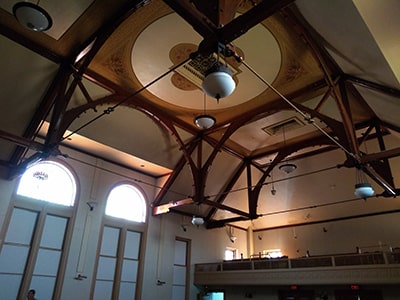
Blog > Energy > Conserve Energy with Demand Control Ventilation
Conserve Energy with Demand Control Ventilation
12/18/19 | Gregory Carr, Rexel Technical Consultants

Blog > Energy > Conserve Energy with Demand Control Ventilation
12/18/19 | Gregory Carr, Rexel Technical Consultants
Commercial, industrial, municipal buildings, and even larger homes may require ventilation with fresh outside air. Without it, the air would become stale and overburdened with CO2 and other contaminants. Industry standards stipulate ventilation requirements based on room size and occupancy. Typically, by design, fresh outside air is brought into the building at a constant volume.
While ventilation is critical to comfort and productivity, the incoming air must be cooled or heated as applicable. As this cost can be substantial, it is typically an area where a large amount of energy can be conserved with minimal financial outlay.
Demand control ventilation changes the programming of the building automation system or specific equipment controller, or, in some cases, it can be done manually. A CO2 sensor is added to measure the air quality in the space in question. Change the programming to default to a minimal or null outdoor air volume flow rate. When the CO2 sensor indicates a concentration higher than the setpoint, the outdoor airflow rate increases to bring in more fresh air.
Demand control ventilation (DCV) is typically used in very large meeting halls and auditoriums where occupancy varies from zero to large amounts of people. Like night setback, this feature can be scheduled for known periods when meetings or events will take place. While this may work and save the cost of the sensor, this would provide a level of operation that is typically neglected in the long run. Also, this method would not take advantage of the control system’s capability of following the CO2 level rise and fall as people come and go or activity levels change and minimize the heating and cooling used for the incoming air.
Classrooms are another great use of demand control ventilation. Ventilation for these spaces is typically designed for maximum occupancy. In fact, class sizes vary greatly, and activities range from sitting passively to moving about vigorously. This application would obviously require far more sensors, and typically a single air handling unit is used for many classrooms. One method for this application would be to use a sensor in each room and increase outdoor air based on how many rooms are reporting above CO2 setpoint.
Another method would be to forgo the individual room sensors and install a sensor in the common return ductwork nearest to the air handling unit. This would basically sample a mix of the air in the classrooms and keep the CO2 level at setpoint. Even in office spaces, which were once thought to be non-candidates for this operational improvement, using a sensor in the common return air duct or strategically placing in one or numerous spaces can maintain air quality and yet save substantial cooling and heating energy costs.
The savings achieved with demand control ventilation tend to vary. If you have a theater and a sellout crowd every day and night, the savings may be minimal. If you have a sales office with several large conference rooms where most folks are traveling to clients, there is a potential for significant savings. Studies on the implementation of the measure and our own experience indicate that savings typically range between 15% – 50% of the utility expense for conditioning the space where DCV is applied.

We can help you determine if demand control ventilation is the right choice for your spaces. Contact us today!